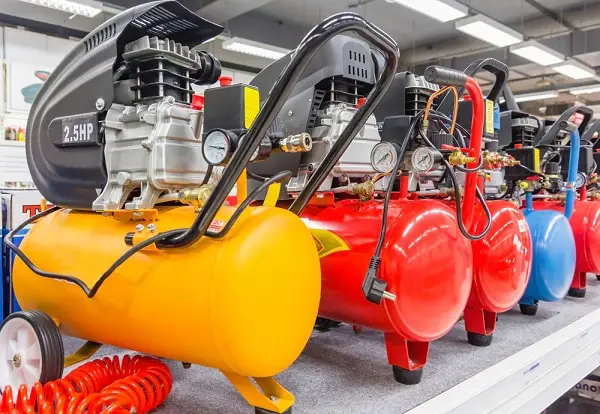
Common Problems With the Porter Cable Air Compressor
Regardless of whether your Porter-Cable Air Compressor is newer or you’ve been using it for quite some time, the truth of the matter is that every compressor machine will eventually run into a problem or two (or three). After all, while Porter-Cable air compressors are amazing pieces of machinery, they aren’t indestructible––no air compressor is.
However, when you just know that something is going wrong with your Porter-Cable air compressor, it can still be quite the task to pinpoint what the issue is. Especially if you’re not quite savvy with troubleshooting and maintenance, finding out what’s going on can be a challenge.
No worries, however, we’re here to help. In this article, we will be discussing several of the most common problems that you may run into with Porter-Cable air compressors, what may be the cause of them, and what should be done to fix the problem. So relax, take a scroll through this list, and use it as a guide to troubleshooting what may be going wrong with your Porter-Cable air compressor. It may be a simple fix that could be alleviated in a matter of minutes.
What is a Porter-Cable Air Compressor?
In the world of air compressors, Porter-Cable is a brand that specializes in smaller air compressor systems, most notably its pancake air compressor system. While the brand offers a line of single-stage compressors, it also offers many other products, mostly power tools.
1. Water in Compressed Air
This is actually one of the most common concerns with air compressors, let alone Porter-Cable air compressors. If you’ve ever noticed water collected in your tank or coming out when you spray or use the compressed air, this is due to water condensation occurring due to humidity and the presence of water around or near the compressor system. The water found in your air tank (and air) is collected as the air exits the air tank, resulting in water in your lines and eventually in your work, such as is the case when your paint comes out wetter than normal. To fix this, remove your air tank from an extremely humid area and drain the air tank routinely, preferably after every use.
2. Compressor Won’t Start
Sometimes, the seemingly worst thing can happen–– your compressor may not want to start. When this happens, you may think your system is broken and done altogether. However, check first to make sure that your machine is plugged in and the switch is turned on. If it is and still not starting, check your pressure switch. Sometimes if the pressure switch is set for a cutin pressure below the current air pressure of the compressor tank, you may find that the pressure switch isn’t being tripped into the on position, resulting in no power flow and the machine’s inability to start.
3. Won’t Build Pressure Past 40psi
If your system turns on but doesn’t seem to be able to build up pressure past the 40 PSI mark, there are a few things to check:
- Make sure your electricity option is full 115Vot 15AMP or 220V. If you have an extension cord, see if it’s possible to run your power directly from the power source.
- Check for any air leaks. Do this by listening for any air leaking from the compressor. You’ll be able to hear any unfamiliar leaking noises from the compressor if there’s a leak.
- Inspect your intake and exhaust valves. If they are broken or fail to seal, your compressor can run forever without building up enough pressure needed to initiate a shut-off.
- See if there are any leaks in the pressure switch system. The pressure switch is typically made with a rubber diaphragm, which presents an opportunity for air to leak.


The pressure goes to 120 and compressor doesn’t stop. It stays at 120 and the valve doesn’t open.
Once the tanK is pressurized to 150psi, i connect thE hose to my backflow preventer. OncE i inCrease outlet pressure to about 45 psi, the tank pressure drops to zero in about a minUte. Hose isnt leaking. Fittings on backflow preventer are new. Help!
The pressure builds up but will not shut off. At 150psi+ the relief valve blows and empties the tank
The Hose from pump to tank gets very hot just from One Tank fill is this normal?
I have the same problem as Ron builds pressure but air does not come out the hos
compressor runs tank fills and release valve works but other side where air comes out to run equipment has no air. Fill tank to 90lbs or so and it will stay in tank until release valve is activated.